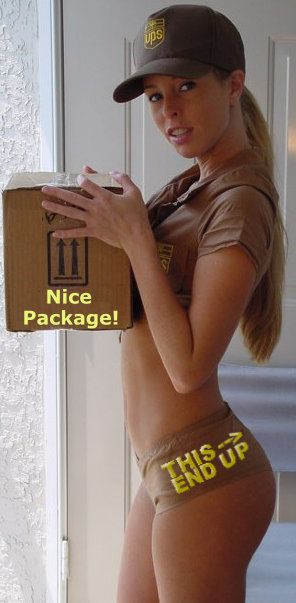Mexico's Desert Mulies
Some of the finest mulie hunting is found amid Sonora's stately saguaro cacti.
By Craig Boddington
The Sea of Cortez stretches west about 60 miles from the Sonoran Desert to the Baja Peninsula. On a January day in 2002, the day I got my buck, the air was so clear that I could see Baja's rugged sheep mountains rising across all that deep blue water. We'd been hunting north of Puerto Libertad, an area of rocky ridges separated by cactus flats, and we had seen few deer. This isn't abnormal in the Sonoran Desert; collectively there are a lot of deer, but the desert is huge and the animals are thinly dispersed.
Unlike most mule deer hunting, you don't always concentrate on looking for deer--you focus on their tracks. The Mexican cowboys--not all, only an elite few--are in my estimation the finest trackers in the world. I have hunted with Bushmen in the Kalahari, pygmies in Central Africa's forests, aborigines in Australia's Outback and other good men from dozens of legendary hunting cultures. I have seen fine tracking, but I have never seen tracking excelled by that done for mule deer in the Sonoran Desert.
So if you're with one of the great Mexican trackers, you hunt mule deer by hunting for their tracks. They are not difficult to spot in the packed sand of the ranch roads or along the sand washes the deer often use to travel. In this arid climate, aging tracks is extremely difficult, though, and desert mule deer--especially the bucks--wander vast distances. Therefore it's essential to age the tracks to within a couple of hours, not days. These trackers can do this.
They can also determine sex from the tracks, and they can tell a big, mature buck from a young buck. Many deer hunting authorities will tell you this is impossible, but the Mexican cowboys do this routinely and with an uncanny level of accuracy. If they choose to follow a track, it is almost certain that it's fresh enough that odds for closing are good and that the buck is worth a look. And they can follow the tracks--not just along the roads and sand washes but across the desert floor, over gravel beds and rocky tailings.
Finally, these men of the desert, the good ones, have an incredible sixth sense about where the deer are and what they are doing. On my first desert mule deer hunt nearly 15 years ago, I was guided by legendary tracker Juan Valenzuela. We followed fresh tracks for a couple of miles, and Juan knew we were getting close. Then the wind shifted, and Juan signaled that we would leave the tracks and circle around.
We angled to the right to keep the wind off our backs, walked for about 500 yards, then made a hard left. We slowly walked perhaps 100 and (with significant self-satisfaction) Juan pointed straight ahead at our buck, peacefully bedded in the shade of a mesquite. Luck? Maybe, but in Sonora things like this happen too often for chance.
A FINE DAY IN MEXICO
Although the desert looks the same to you and me, it doesn't look the same to the deer or to the people who live with them. There are likely areas, but these change with the year depending on typically sporadic rainfall. One part of the desert may get good rains and have good browse while another part just a few miles away may get nothing. The mule deer know, and they follow the rain. We found plenty of old tracks on the clear morning I described at the beginning of this story, but none fresh enough to follow. We glassed from several vantage points as well--conventional mule deer hunting methods aren't ignored here--and we saw several does and one young buck.
Desert mulies are thinly dispersed and travel extensively. Most hunting in Sonora is done by tracking--finding a set of prints fresh enough to follow--and the author considers the Mexican cowboys the best trackers in the world.
Later, approaching noon with the January sun gaining authority, we turned down a narrow canyon and in a few hundred yards spilled out onto a clean sand beach on the Sea of Cortez. We built a small fire and cooked burritos on a small grill, a fine lunch. Then I hunted up some shade. It was chilly in the lee of a boulder, so I wrapped up in a jacket, put my gloves on and drifted off to sleep. My Mexican friends took their siesta in the warm sunshine.
The sun was dropping and the air cooling fast when we started again. In the mornings and afternoons you actually look more for deer than you do for tracks because the deer are up and moving. And in the afternoon you cover ground, hunting and glassing along likely movement corridors.
It was about 4:30, with the sun dropping over the coastal ridges behind us, when we climbed a low, rounded ridge and looked down into a mesquite-lined watercourse below. My guide, Ramon Diaz, young in years but extremely experienced instantly hissed, "Muy grande!" The big one! I couldn't see him.
This is perhaps the biggest problem for gringos. The guides see the deer and know what they're seeing. It's a brushy, living desert covered with a wide variety of cacti: saguaro, cholla, ocotillo, prickly pear, barrel cactus and more. Along the washes are deep green mesquite, palo verde, desert grasses and still more. Deer are hard to see, and unless your Spanish is good, it is difficult for the guides to tell you what they are seeing. My Spanish is poor, rusty and slow.
Dwight Van Brunt's buck is the mulie of a lifetime--deep forks, great mass--and representative of some of the trophies found in the Sonoran Desert.
I strained to understand Ramon's whispered directions and see what he was seeing. Yes, a horizontal brown line down in the wash, mostly hidden behind mesquite, maybe 150 yards away (how did he see him at all?). The buck moved then, and I spotted antlers behind the branches and raised the rifle.
The buck was looking up the ridge at us, and I could see his white throat patch, the black of his muzzle, the outstretched ears, antlers spreading well beyond the ears, but the points were lost in mesquite. "Es muy grande?" was the best my pidgin Spanish could do.
"Si, muy grande. Matarlo." Yes, he is big. Shoot him.
This is always the hard part: You have to make a decision based on someone else's observation and shoot. I had never seen the full rack, never counted the points. In seconds the deer would bolt, so if I didn't shoot now I probably never would.
I could tell that this was the widest-antlered buck I had ever looked at through a scope; the rest I had to trust. The entire shoulder was behind a thick screen, but the throat patch was a clear target. I held just under his chin and carefully squeezed the trigger. My buck dropped to the shot, and after watching him for a few moments I ran down to see if I had made the right decision. I had; he was 31 inches wide, the first mule deer I have taken that exceeded the magical 30-inch mark. He was also a clean 4x4, a nearly perfect typical mule deer with pretty good beam and point length.
The Sonoran mule deer, properly Odocoileus hemionus crooki, are desert mule deer named after General Crook, who chased Geronimo through their range. They are found from west Texas across southern New Mexico and Arizona and well down into Sonora and Chihuahua. They are smaller in the body than Rocky Mountain deer, more brown than gray and with less black in the skullcap.
Bonus Coues Deer
Although they overlap, Coues deer are generally found in the hills while the mule deer are more likely to be on the desert floor.
Ramon and I hiked up into a rugged canyon system, and we saw what seemed a good buck chase a doe up into a little saddle. We circled around and came up above them, and as we approached, the doe squirted over the next ridge, tail flagged high. Certain the buck would follow, I got as ready as I could. When he trotted up into view he still looked very good, and I shot him--as simple as that. Two days later, while hunting javelina, I saw (standing in plain view within easy range) the biggest Coues buck I have ever laid eyes on. That's the way it goes.--CB
As you probably have heard, mule deer in the Sonoran Desert grow great antlers. Despite the harsh climate, the desert browse is exceptionally rich in protein and antler-producing minerals. Genetics for antler growth are clearly superior, and in well-managed areas the buck-to-doe ratio and age-class distribution are good.
You won't find Mexican mulies gracing the top rankings in Boone and Crockett, partly because these smaller-bodied deer are hard-pressed to grow racks that compare with the best Rocky Mountain deer. It's also because the biggest desert mule deer are rarely typical. Mismatched points are more common than not on the biggest bucks, which means "deductions" to the record book score. Crab forks and modest antler mass, though not universal, are also common, reflecting the harsh climate.
Even so, Sonora is one of the few places left that has really big mule deer bucks as a significant percentage of the population. And Sonoran bucks tend to be wide.
Bucks with spreads in the upper 20s are common, and bucks with spreads exceeding 30 inches aren't unusual. Sometimes they are much, much wider, and sometimes they have it all. So I go there for the chance at a really good buck and also because winter in the desert is beautiful and because the tracking hunt is one of North America's great experiences.
I was hunting with Ernesto Zaragoza's Solimar Safaris (520/287-1661), probably the longest-established mule deer hunting operation in Mexico. A couple of the racks I saw at the camps were heavy-antlered with spreads in the mid-30s, really super deer. Late in the hunt, Kimber's Dwight Van Brunt, came into our camp with a buck that was "only" 28 inches wide, but the buck had deep forks, long beams and points, exceptional mass throughout--easily a typical Boone and Crockett mule deer with plenty to spare. At sundown on the last day, Bill Hober shot a good, solid, heavy-antlered old buck measuring about 28 inches wide.
The potential for such bucks is what keeps serious mule deer hunters going back to Mexico. The big ones are there, and I know of no better place to look for them. I have hunted desert mule in Sonora five times, and I've taken three bucks--two of which were "good." I haven't yet seen one of the really big ones yet. I'll just have to keep trying.
Thursday, May 3, 2007
Subscribe to:
Post Comments (Atom)















No comments:
Post a Comment